The folks at CBC’s Marketplace have done it again. As a kind of a follow-up to their piece last January on homeopathic medicine, they’re now coming after the ginseng-based Cold-FX, purportedly Canada’s most popular remedy for the common cold.
Remembering Alfred Wegener
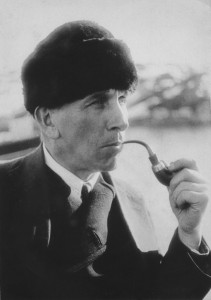
“All truth passes through three stages. First, it is ridiculed. Second, it is violently opposed. Third, it is accepted as being self-evident.” This summary, usually attributed to German philosopher Arthur Schopenhauer, seem especially true of scientific knowledge. Take plate tectonics. The idea that surface of the earth is constantly changing as continents drift around on top of a layer of molten rock is so well established that it’s hard for most people to imagine otherwise. But exactly 100 years ago today, when a 31-year-old German meteorologist named Alfred Wegener presented this idea at a meeting of the Geological Association in Frankfurt, he was mocked. It would take decades and the work of many other scientists – including some prominent Canadians – to show that plate tectonics are as real as gravity and evolution.
Higgs, or Why I’m Probably Not Going to Get Any Work Done Tomorrow
Tomorrow, at 8 AM Eastern Time (5 AM Pacific) CERN (European Organization for Nuclear Research) will hold a seminar updating all and sundry on the latest data from two major experiments that have been going on for some time: the CMS (Compact Muon Solenoid) experiment and ATLAS (A Toroidal LHC Apparatus). The latter involves over 3000 physicists from around the world, including a good many Canadians. Both are looking for evidence of the Higgs boson, the so-called “God particle” that, if it exists, explains why certain particles in the Standard Model have the property we refer to as mass.
Over the last few weeks, there’s been a veritable deluge of virtual ink spilled on this matter (I personally like this article, and also this one) despite the fact that the press office has clearly stated:
These results will be based on the analysis of considerably more data than those presented at the summer conferences, sufficient to make significant progress in the search for the Higgs boson, but not enough to make any conclusive statement on the existence or non-existence of the Higgs.
So what’s everyone so excited about? Well, the fact is that even if the data is not strong enough to support a conclusive statement (the statistical term is five-sigma) it’s still the first glimpse the general public will get at the data that, given enough time and replication, will eventually allow a yes-or-no statement to be made. As Churchill is supposed to have said “It’s not the end, it’s not even the beginning of the end. But it is the end of the beginning.”
Given that so much has been written about the Higgs boson already, as well as the fact that high-energy physics isn’t really my bailiwick, I’m not going to try and tackle the subject in any great depth here. Instead, I’d like to point you to a few places where you can get real physicists to explain things to you, in person or virtually.
Waterloo’s Perimeter Institute for Theoretical Physics will be running a live webcast with the brilliant title of “What the Higgs is going on?” at 12:30 Eastern Time. It’s being pitched at the high-school level, so it should be pretty accessible and informative.
Torontoians can trundle on down to the McLennan Physical Laboratories on the U of T campus (60 St. George Street) at 12 PM to hear a presentation from physicists involved in the ATLAS project on the significance of the mornings findings. That will also be webcast here.
And finally, if you’re in Vancouver, noted nuclear physics facility TRIUMF will be hosting a public seminar in their main auditorium (4004 Wesbrook Mall) at 2:30 PM PT.
Have fun!
The Burgess Shale: A Secret Worth Sharing
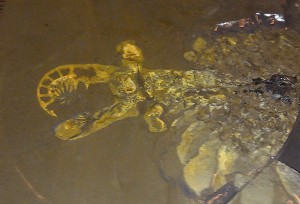
Ever since I started this blog, I’ve been looking for an excuse to write about the Burgess Shale, a national treasure of science that has somehow remained a secret to many Canadians. Discovered over 100 years ago, these sedimentary deposits – situated on top of a mountain in British Columbia’s Yoho National Park – remain unsurpassed as the richest source of well-preserved fossils from the Cambrian period, which stretched from about 540 to about 490 million years ago. Hundreds of thousands of Burgess fossils have been recovered, and the story they tell constitutes a rare and vital peek into the beginnings of complex life on earth. Despite this, most Burgess fossils are only accessible to a handful of experts, and there are few places you can go to learn about them first-hand. All that changed on Thursday, when I was fortunate enough to be present at the launch of a new website dedicated making the Burgess Shale fossils accessible to all Canadians, and indeed the entire world. As Parks Canada CEO Alan Latourelle aptly put it, the Burgess fossils are “a secret worth sharing.”
The Science of Dance, the Dancing of Science
Interpreting science for the general public is important, but that doesn’t mean it’s easy. Sometimes, no matter how many killer diagrams and visually stunning charts you have, or how refined and elegant your language, there is only one way to truly get your message across: interpretive dance!
The Dance Your PhD contest is the brainchild of John Bohannon, who writes the occasional “Gonzo Science” column in Science Magazine. The rules are simple: the participant must be (or at one time have been) a PhD candidate, and must appear in a video in which they use interpretive dance to explain their research. Beyond that, anything goes. Most videos include a number of collaborators, from lab mates to professional coreographers and special effects artists. This year, the fourth since the international contest started, saw a record 55 entries, which were then whittled down to a field of 16 semi-finalists. The field included two Canadians, one of whom won her category, and both of whom I had the pleasure of speaking with this week.
Continue reading
Canada shines at 2011 Ig Nobels
Some people gather at a friend’s house to watch the hockey game. Others host Oscar parties. But the group of friends that gathered in my apartment last night were there to share a group viewing experience of an altogether more original kind: to cheer on Canada at the 21st Annual Ig Nobel Prize Ceremonies. We were not disappointed: among the ten winners were two Canadian scientists investigating, respectively, how temporarily blinding someone can impair their driving ability, and how a certain species of Australian beetle seems to prefer mating with beer bottles.
Scrabble makes you . . . good at Scrabble
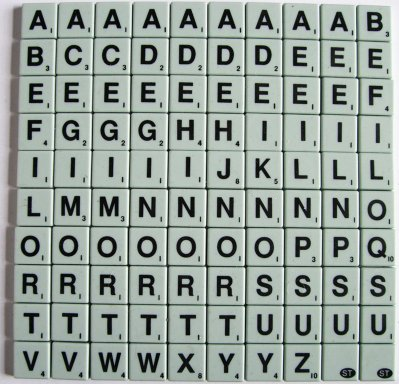
This week, we got another great example of how science stories are often misinterpreted by the media. Articles in the Calgary Herald, Global News, and MSNBC all touted a new Canadian study which they say shows that ‘Scrabble makes you smarter.’ If this sounds too good to be true, that’s because it is. (To their credit, the folks at CBC appear to have done their homework.) However, the study’s real conclusion is no less interesting: it provides further evidence that the human brain can re-wire itself even into late adulthood.
The first step in getting past media hype is to look at the peer-reviewed article itself. (Happily, the good folks at Memory and Cognition have been kind enough to make this particular work open access, thanks guys!) From the abstract:
The results of a series of cognitive assessments showed that the Scrabble players and control participants differed only in Scrabble-specific skills.
The Fanged Frogs of Sulawesi
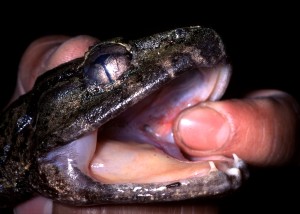
Despite a name that sounds like it came from a bizarre horror film, the fanged frogs of Sulawesi are not particularly dangerous. In fact, the exact function of the fangs – technically bony odontoid processes – isn’t really known. “They could be used for defence, although it’s not clear that that’s true,” says Ben Evans of McMaster University “They certainly don’t bite you when you catch one in your hand.” What Evans does know is that these unusual critters are a perfect example of the evolutionary process of adaptive radiation.
Evans is an evolutionary biologist who has spent years studying the biogeography of the Indonesian island of Sulawesi. “Sulawesi is interesting because it’s near some large islands, but it’s biogeographically very distinct,” he says. “A remarkable and precipitous faunal divide occurs between Sulawesi and Borneo, which is famous in biogeography. It’s called Wallace’s line.” Alfred Russell Wallace, a well-known biologist and contemporary of Charles Darwin, worked extensively in the Indonesian archipelago, using it as a model system to understand the processes that affect biodiversity worldwide.
Canadian Science: By The Numbers
Regular readers will note that I’m fond of touting the high quality of Canadian science despite our many perceived handicaps as a nation (smallish population, widely separated institutions, latent inferiority complex, etc.) But how, I hear you virtually ask, can I possibly know this is true? Is there any data to back up this claim? Well, smarty pants, it turns out there is.
Sciencewatch.com is an arm of Thomson Reuters that keeps tabs on trends in published science papers and their impact on the scientific community, as measured by the number of citations. Periodically, they do a retrospective of papers from a certain country, comparing their quantity and impact to the world average. As it happens, this week they featured the True North Strong and Free.
Earth’s Newest Companion
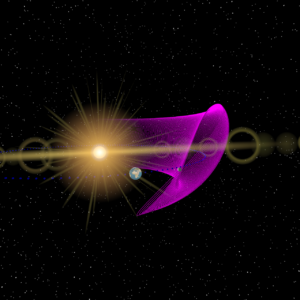
It just doesn’t get any bigger than this: today a discovery by Canadian researchers is gracing the cover of Nature magazine. It is not an understatement to say that this is the science equivalent of getting your picture on the cover of the Rolling Stone, and I do sincerely hope Martin Connors, Paul Wiegert and their French colleague Chistian Veillet are enjoying their moment in the international spotlight.
So, what’s precipitated this moment of mass adulation and fame? An asteroid. Its name is a bit of a mouthful, 2010 TK7, which according to my limited understanding of the vagaries of the provisional naming system, means it was first discovered in early October of 2010, and that it was the 185th new object to be discovered in that two-week period. But what’s made it so famous is that it seems to be the first example of a Trojan companion for the Earth.
Continue reading